By Dan Weisz
Most of the Great Horned Owl photos I have sent you have been from one mid-town Tucson nest. While those owlets have been the first and the easiest to see, there are two other Great Horned Owl nests that I am also paying attention to regularly.
The newest one is also mid-Tucson, close to the Rillito River and only about two miles from the first nest I’ve been visiting. There is one mother owl and only one owlet at this nest. They are a few weeks “behind” the process of the birds in the main nest I have been following. Here are two photos of the female Great Horned Owl. The feather tufts above her head, called “plumicorns”, are the feature that give this large bird its name: Great Horned Owl. This species is the most common owl throughout the United States and the largest of the owls in Arizona.
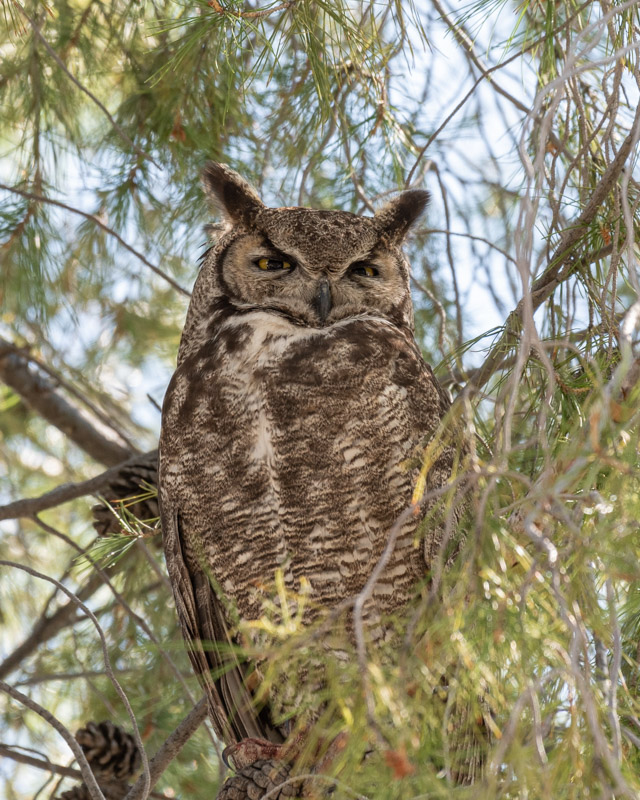
You can easily see the brood patch on this owl. The female Great Horned Owl, as do many other birds, loses her breast feathers before breeding season. When the eggs are laid, this allows the mother to brood the eggs with skin-to-egg contact, a much more efficient way to keep the eggs warm. And when the chicks hatch, this also allows for an easier way to keep the hatchlings warm on cold nights and cool days. That part in her breast feathers shows where she has that “bald spot” beneath the feathers.
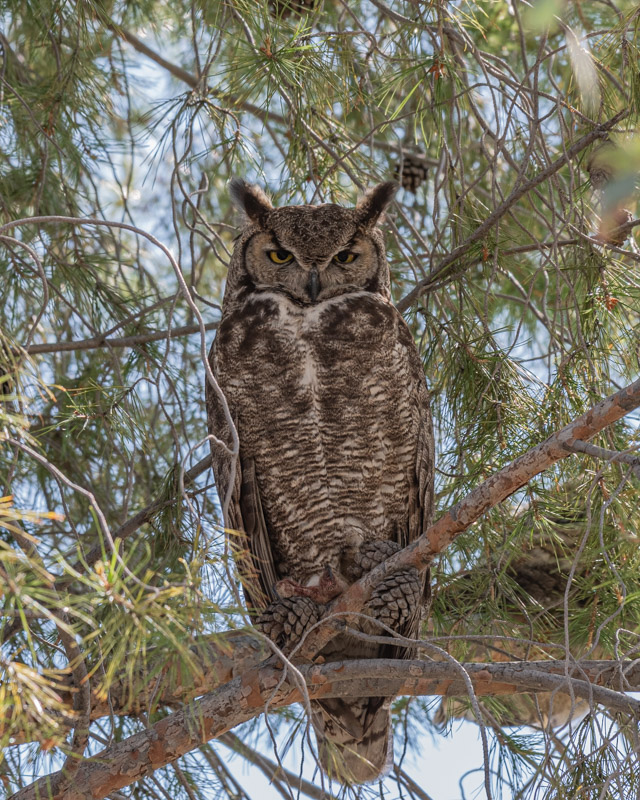
The chick just left the nest last week. It was perched and sleeping very high up in this pine tree.
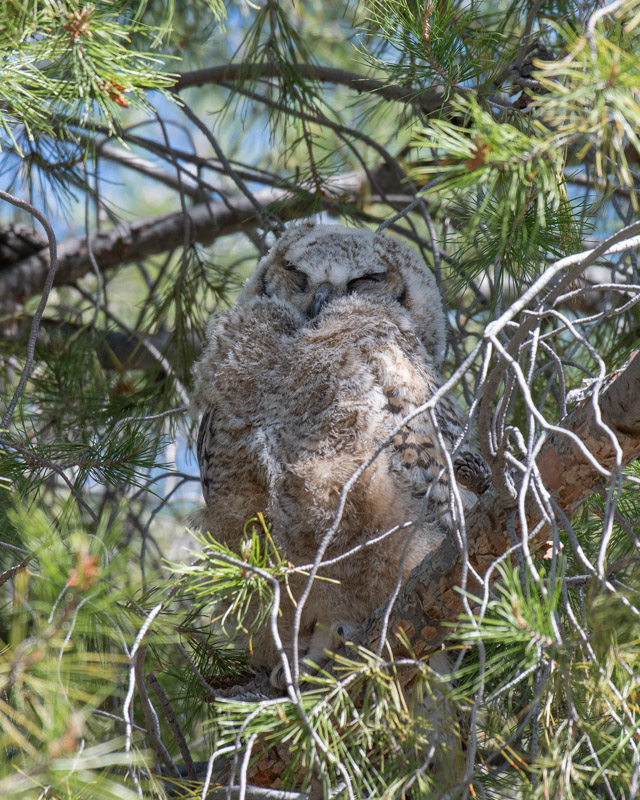
The third Great Horned Owl nest is one that I have mentioned briefly. The photo below, taken on Sunday April 5, was the first time I had seen these chicks. This nest is between the other two nests I have been photographing, about one mile from either nest.
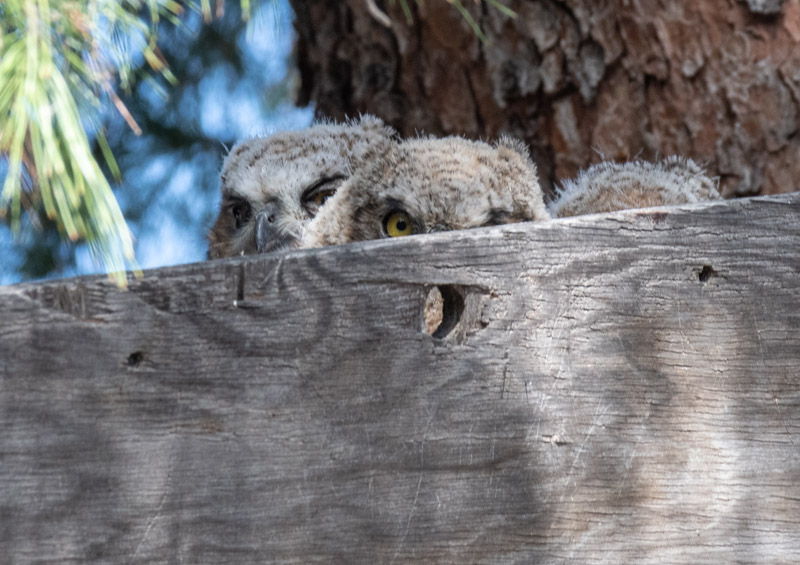
And the photo below was the only evidence I had of owls in that nest tree when I took this photo nearly two weeks after, on Friday, April 17.
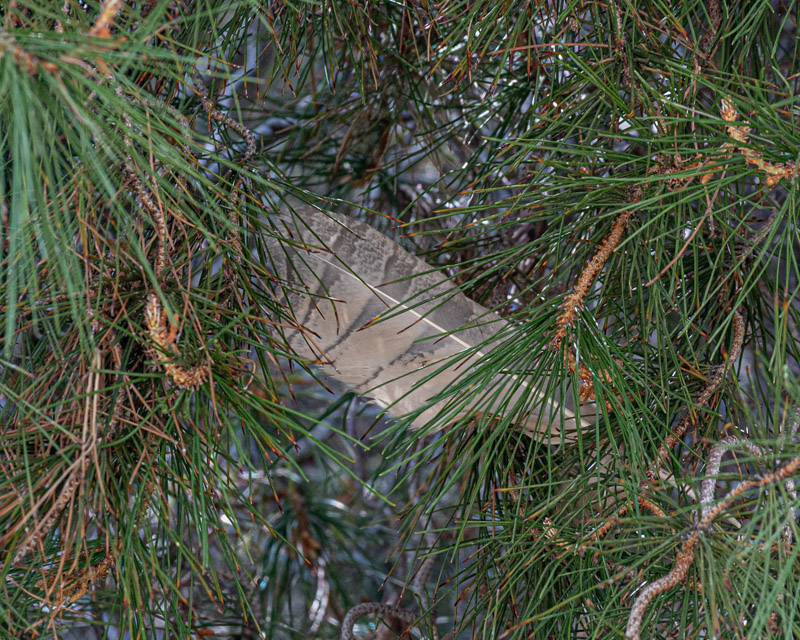
Finally, on Tuesday the 22nd, I was rewarded for my persistence. As soon as I arrived at the nest tree I saw all three Great Horned Owlets out in the open, sunning themselves. This is about as cute and cuddly as they can get.
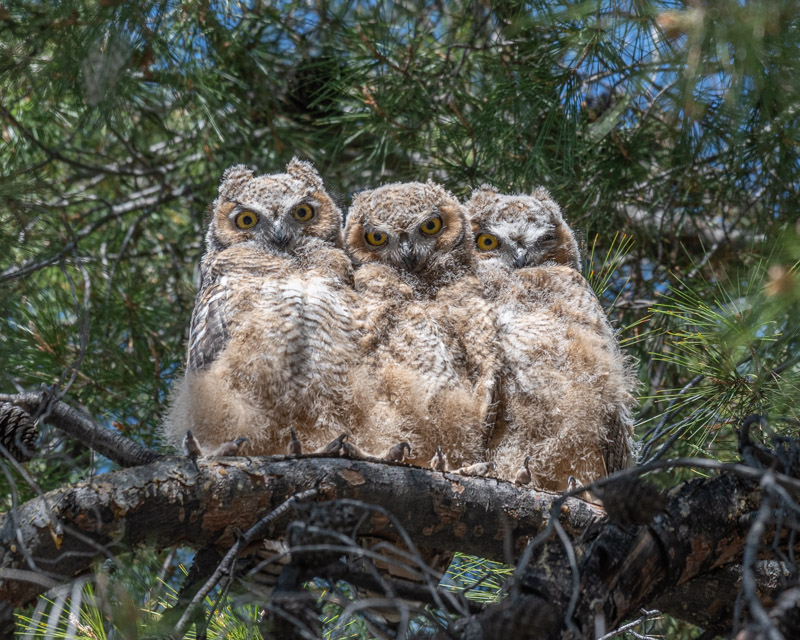
The middle owlet was most active. It wanted to get a closer look. The two owlets on the side are beginning to get some of those plumicorns on their heads. Additionally, look at those formidable talons. Each of the birds has rotated their outer toe to the back so you only see two talons on each foot facing forward.
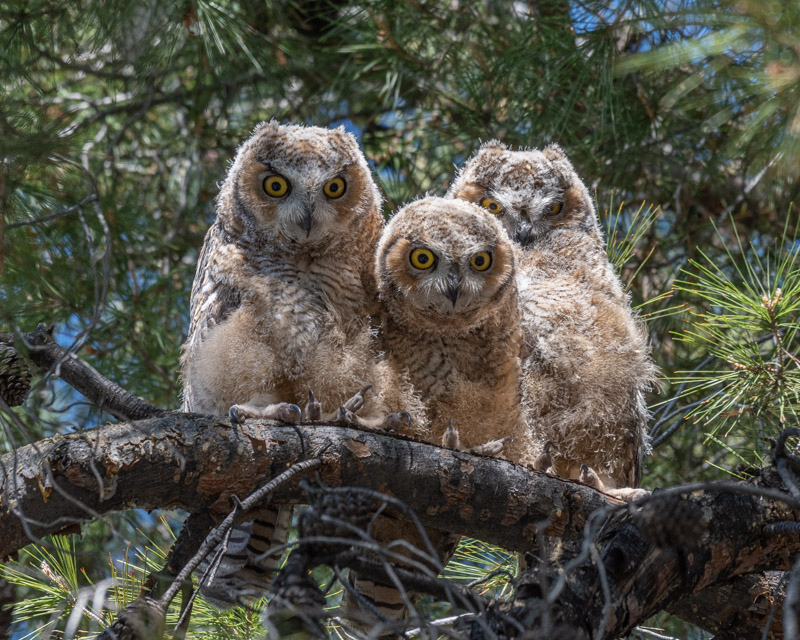
Then the middle owlet yawned. As humans, we would like to think it was trying to say something, but probably not. By now, the owlet on the right has gotten tired of all of the human company below.
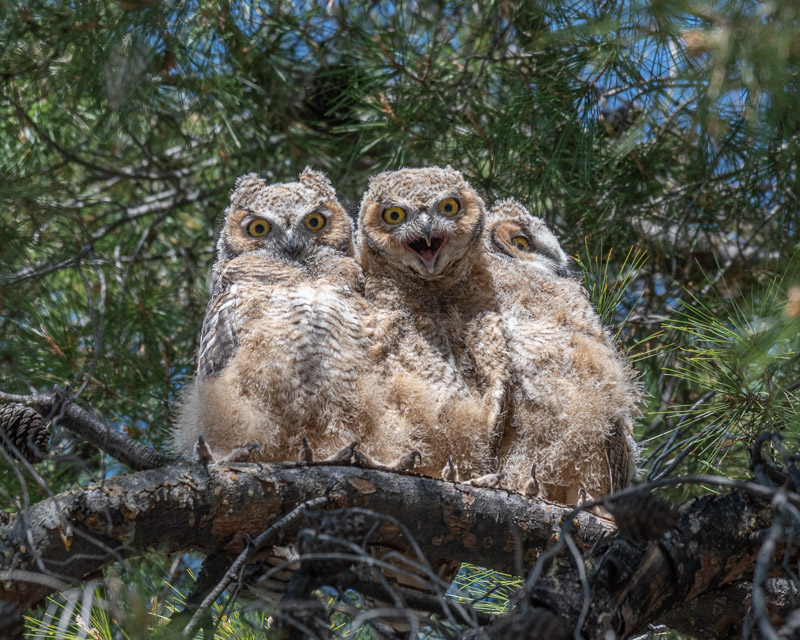
Sticking its tongue out at us does not mean anything, does it???
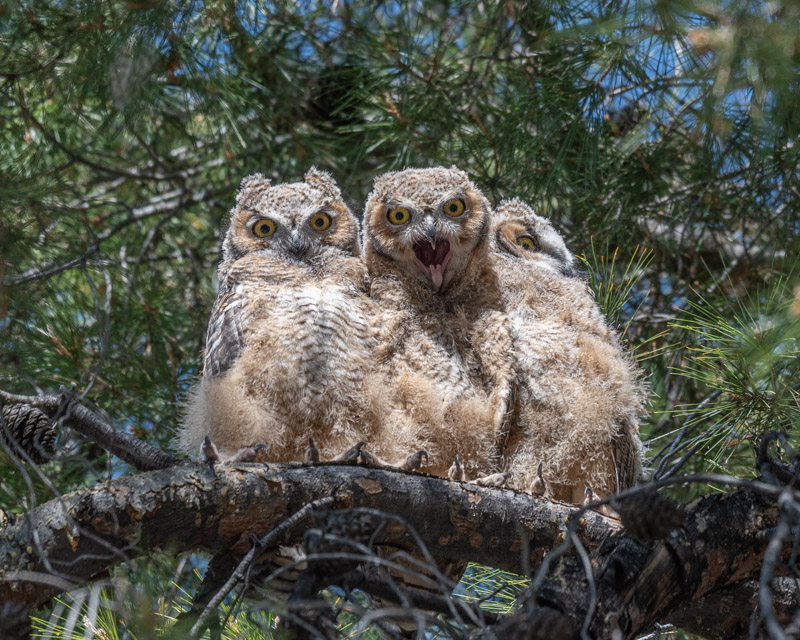
Finally, one owl disappeared stage left (to our right) Its siblings watched it closely. Mom was perched further to our right and the missing owlet did move up to a branch to be closer to her.
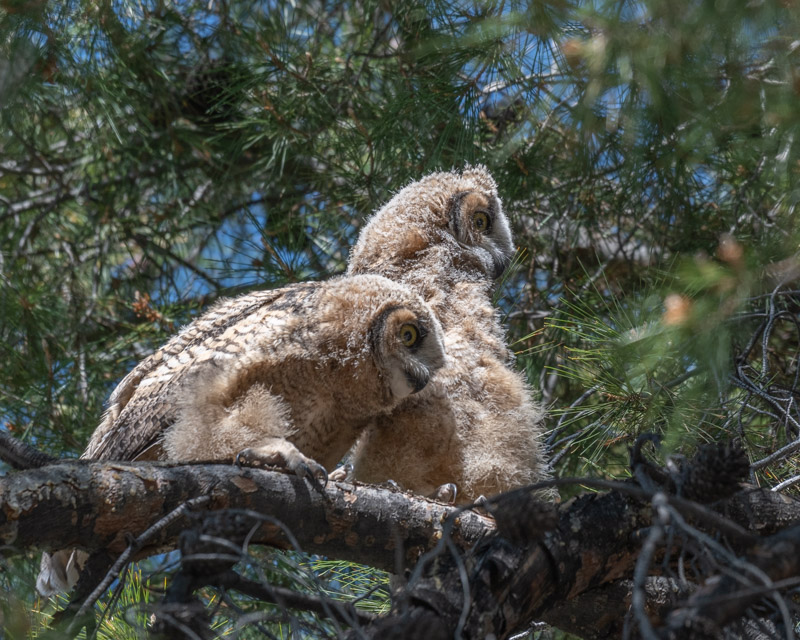
Then the second owl wandered off. But one owl remained and it still was learning all about the other living creatures in its environment.
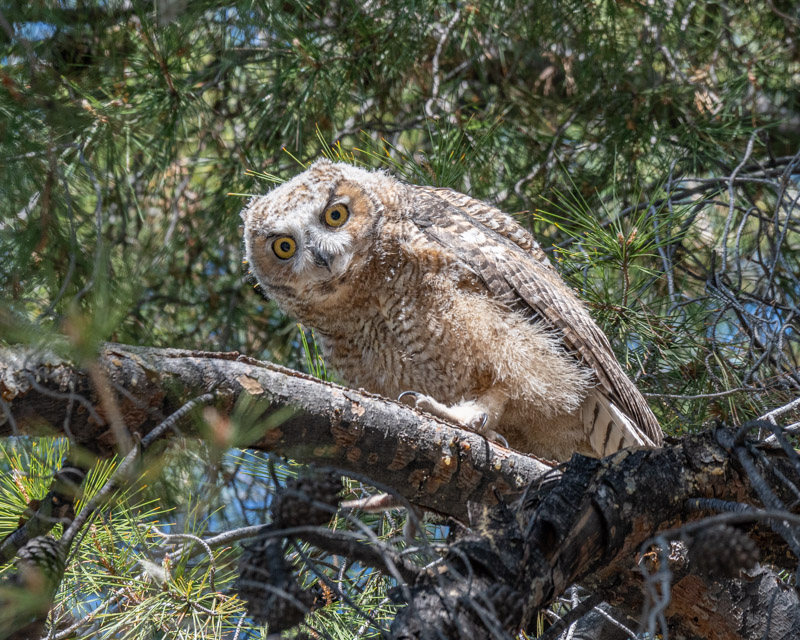
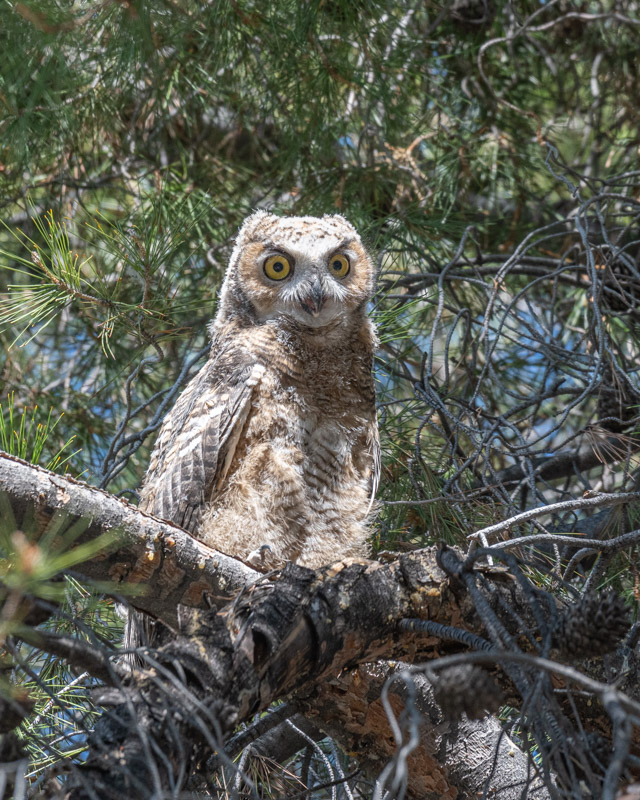
And finally, it was time to preen, stretch, and scratch. That’s pretty much the life of a young owl: sleep, eat, stare, stretch, preen and then sleep some more.
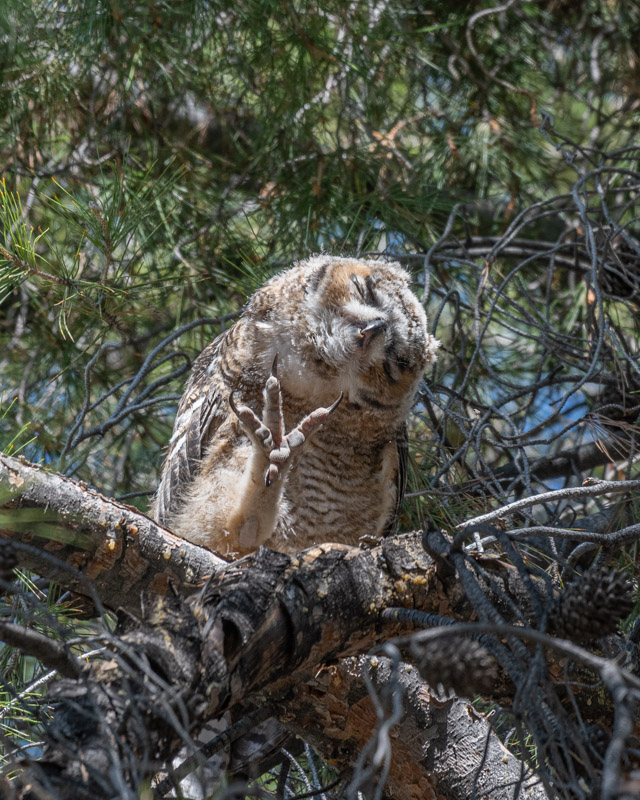
There will be more owl nest tree photos to follow, but the next email is about something really different!
